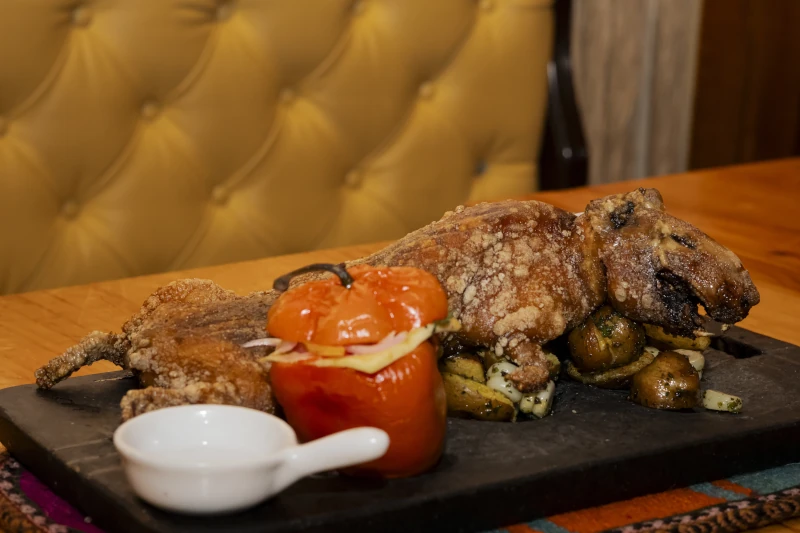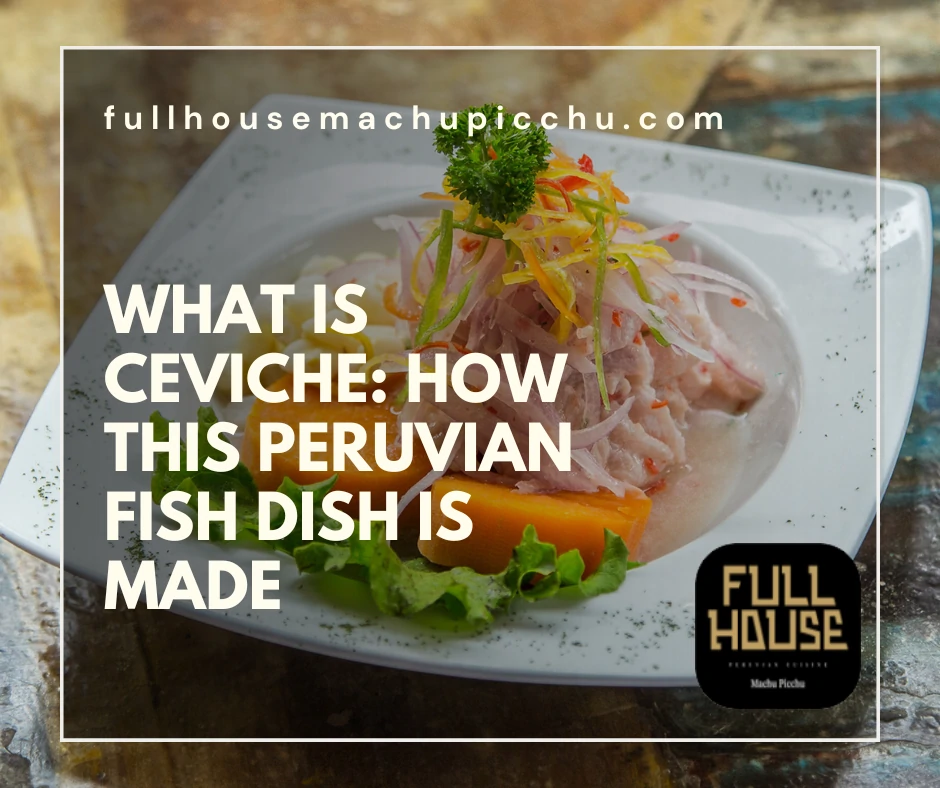The Cultural Significance
Peruvian guinea pig is more than just a meal; it’s a cultural experience. Known as “cuy” in Spanish, these small rodents have been a staple in the Andean diet for centuries. They’re often served during special occasions and are considered a delicacy. The preparation and presentation of cuy vary across the regions, but what remains consistent is the respect for this tradition. At the level of South America this is one of the most exotic and extraordinary dishes.
Cuy is often associated with celebrations, such as weddings and festivals, where it symbolizes prosperity and community. The historical significance of cuy dates back to pre Columbian times, where it was not only a source of nutrition but also played a role in religious ceremonies and rituals.It’s one of Peru’s signature dishes, so Full House Restaurant offers one of the best dishes prepared with guinea pig.
Culinary Preparation
The preparation of cuy can be intricate, with recipes passed down through generations. The most common method is roasting, but it can also be fried or stewed. The Peruvian guinea pig dish is usually seasoned with a blend of Peruvian spices, giving it a distinctive flavor profile that is both savory and slightly gamey. Each region in Peru has its unique take on the dish, and chefs often infuse their personal touch, adding herbs and spices native to their local environment. It is considered one of the most nutritious meats due to its high protein and low in fat content.
The preparation process is an art form, where the texture of the guinea pig meat and the intensity of the spices are carefully balanced to create a dish that is as much a feast for the senses as it is a meal. For those interested in culinary arts, understanding the preparation of cuy offers insight into the broader spectrum of Andean cooking techniques and ingredients. We offer you a comprehensible guide for first timers.
Where to Find the Best Cuy Dishes

Cusco’s Culinary Delights
Cusco, the historical capital of the Inca Empire, offers a myriad of restaurants where you can enjoy authentic cuy dishes. Here are some top picks:
- Pachapapa: Located in the San Blas district, Pachapapa is known for its rustic charm and traditional Andean dishes. Their roasted cuy is served with Andean potatoes and a side of ají sauce, providing a perfect balance of flavors. The ambiance of Pachapapa enhances the dining experience, with its open courtyard and traditional music setting the mood for a memorable meal. The staff is knowledgeable and can guide you through the various options, ensuring that your experience is both enjoyable and educational.
- Cicciolina: For a more upscale experience, Cicciolina offers a modern twist on classic Peruvian delicacy. Their cuy confit is a must-try, combining rich flavors with a refined presentation. Located in the heart of Cusco, Cicciolina is a favorite among both locals and tourists looking for a sophisticated dining experience. The restaurant’s innovative approach to traditional dishes makes it a standout choice for those who appreciate culinary creativity paired with cultural significance.
The Sacred Valley’s Gastronomic Gems
The Sacred Valley, with its breathtaking landscapes and rich history, is another excellent spot for tasting cuy. Here are some recommendations:
- Full House Restaurant: Nestled in the heart of Machu picchu, Full House Restaurant serves a delectable version of cuy chactado, a crispy fried guinea pig that is both flavorful and satisfying. The dish is complemented by a selection of local vegetables and grains. The restaurant is renowned for its commitment to using locally sourced ingredients, which adds to the authenticity of the meal. Dining at Full House offers a unique opportunity to enjoy traditional Andean cuisine while taking in the serene beauty of the surrounding valley. So consider taking a look at our menu, you will be greatly satisfied.
Tips for Enjoying Cuy

Embrace the Experience
Trying Peruvian guinea pig for the first time can be an adventurous experience. Keep an open mind and savor the unique flavors. Remember, dining on cuy is not just about the taste; it’s about connecting with Peruvian culture. There are lots of guinea pig breeds, the most commonly used are the short haired ones. The long fur guinea pig, usually are seeing as pets.
Take the opportunity to engage with locals and learn about the history and significance of cuy in their daily lives. Understanding the cultural context can enhance your appreciation of one of the best dishes for tourists. If you want to go to the very essence of the meal, consider trying the famous Chiriuchu.
Pairing Suggestions
Cuy pairs beautifully with Peruvian sides such as corn, potatoes, and quinoa. A glass of chicha morada, a traditional purple corn drink, complements the dish perfectly. Alternatively, opt for a local Peruvian wine to enhance the meal.
The subtle sweetness of chicha morada balances the savory notes of cuy, creating a harmonious blend of flavors. For those who enjoy wine, Peruvian reds, particularly those made from the Tannat grape, offer a robust accompaniment that highlights the rich tastes of the dish.
Capture the Moment
For photographers, the presentation of cuy can be a visual feast. Capture the vibrant colors and textures of the dish, along with the bustling atmosphere of Peruvian markets and restaurants. These images can tell a story of cultural richness and culinary tradition.
Consider documenting not only the food but also the environment and people involved in its preparation. This approach can provide a comprehensive visual narrative that captures the essence of Peruvian culinary culture.
Planning Your Culinary Journey

Maximizing Your Itinerary
For corporate executives with limited time, consider hiring a local guide who can tailor your itinerary to include the best culinary spots in Cusco and the Sacred Valley. This approach ensures you make the most of your visit without the hassle of extensive planning.
A knowledgeable guide can provide insights and background information on each location, enriching your understanding of the regional cuisine. Additionally, they can facilitate interactions with local chefs and vendors, offering a deeper dive into the culinary traditions of the area.
Engaging with Locals
Engage with local chefs and vendors to gain deeper insights into the preparation of cuy. Their stories and expertise will enrich your understanding of this Peruvian delicacy, making your experience more meaningful. Participating in a cooking class or a market tour can provide hands-on experience and a personal connection to the food culture. Engaging in conversations with locals not only enhances your culinary knowledge but also fosters a greater appreciation for the cultural significance of cuy in indigenous cultures.
A Culinary Journey You Won’t Forget
Exploring this culinary treasure of Cusco and the Sacred Valley through cuy dishes offers a taste of Peru’s rich cultural heritage. Whether you’re there for research, photography, or relaxation, embracing the tradition of Peruvian guinea pig will add a unique dimension to your journey. So pack your bags, bring your appetite, and let the flavors of Peru guide your adventure. As you savor each dish, you’ll find that the journey is as much about discovery and connection as it is about taste, offering a memorable experience that resonates long after your visit has ended.



